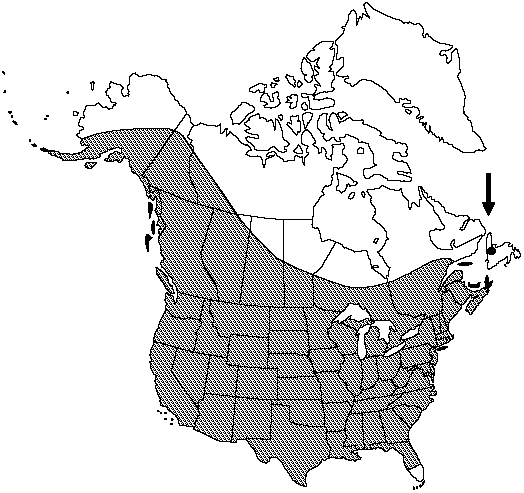Equisetum hyemale subsp. affine
Canad. J. Bot. 43: 1387. 1965.
Aerial stems persisting more than a year, unbranched, 18–220 cm; lines of stomates single; ridges 14–50. Sheaths when mature dark-girdled, brown to gray above girdle, squarish in face view, 4.5–17 × 3.5–18 mm; teeth 14–50, articulate and promptly shed or persistent. Cone apex pointed; spores green, spheric. 2n =216.
Phenology: Cones maturing in summer, old stems sometimes developing branches with cones in spring.
Habitat: Moist roadsides, riverbanks, lakeshores, woodlands
Elevation: 0–3000 m
Distribution

Alta., B.C., Man., N.B., Nfld. and Labr. (Nfld.), N.W.T., N.S., Ont., P.E.I., Que., Sask., Yukon, Ala., Alaska, Ariz., Ark., Calif., Colo., Conn., Del., D.C., Fla., Ga., Idaho, Ill., Ind., Iowa, Kans., Ky., La., Maine, Md., Mass., Mich., Minn., Miss., Mo., Mont., Nebr., Nev., N.H., N.J., N.Mex., N.Y., N.C., N.Dak., Ohio, Okla., Oreg., Pa., R.I., S.C., S.Dak., Tenn., Tex., Utah, Vt., Va., Wash., W.Va., Wis., Wyo., Mexico, Central America in Guatemala
Discussion
In southern and central to western regions plants tend to be taller and have more persistent teeth (Equisetum robustum, E. prealtum); in the Far West they often have bituberculate ridges (E. hyemale var. californicum). Equisetum hyemale subsp. hyemale is found in Europe and Asia to northwestern China in Xinjiang.
Subspecies affine is found throughout subarctic Alaska, including the Aleutian Islands.
Selected References
None.
